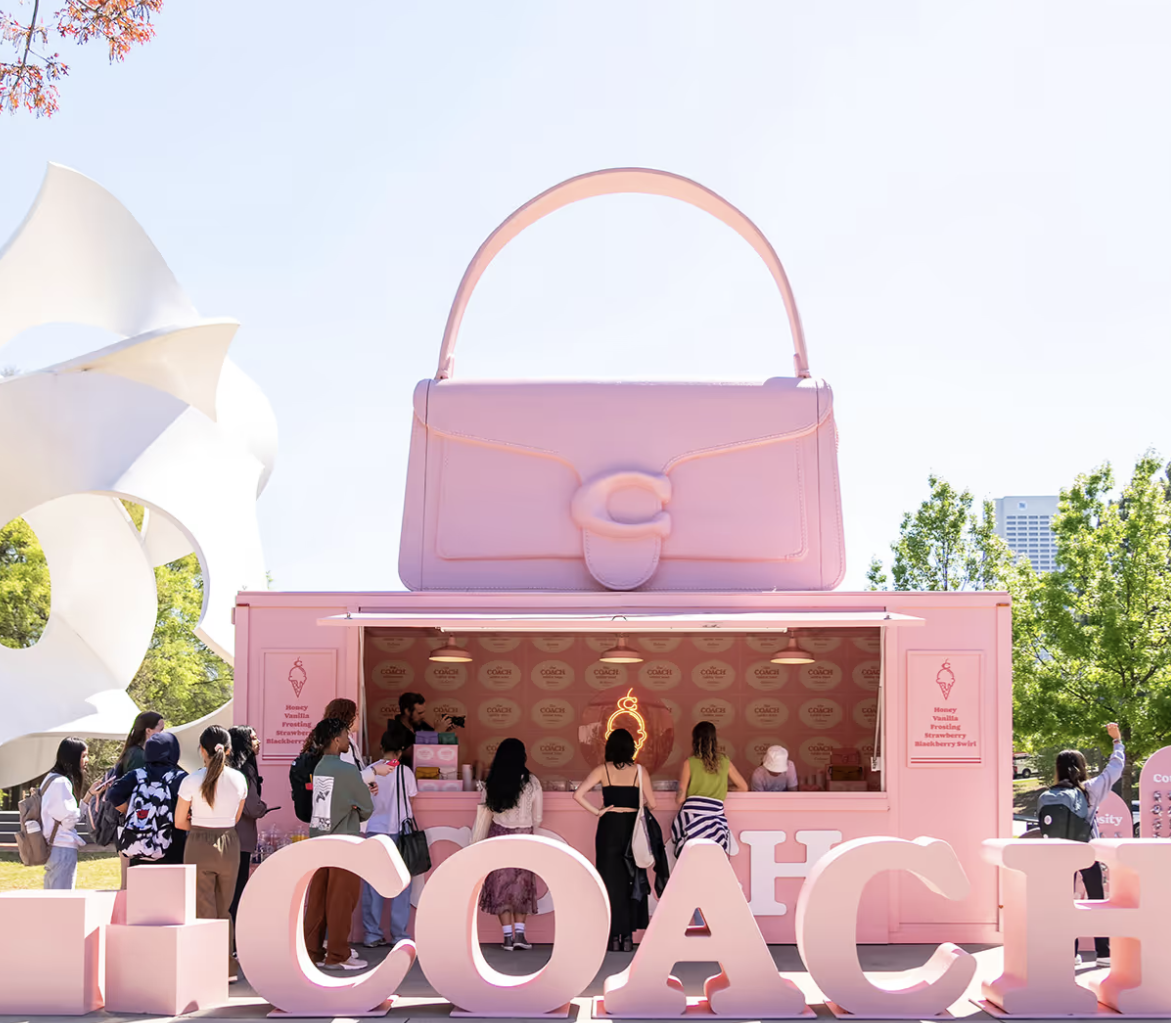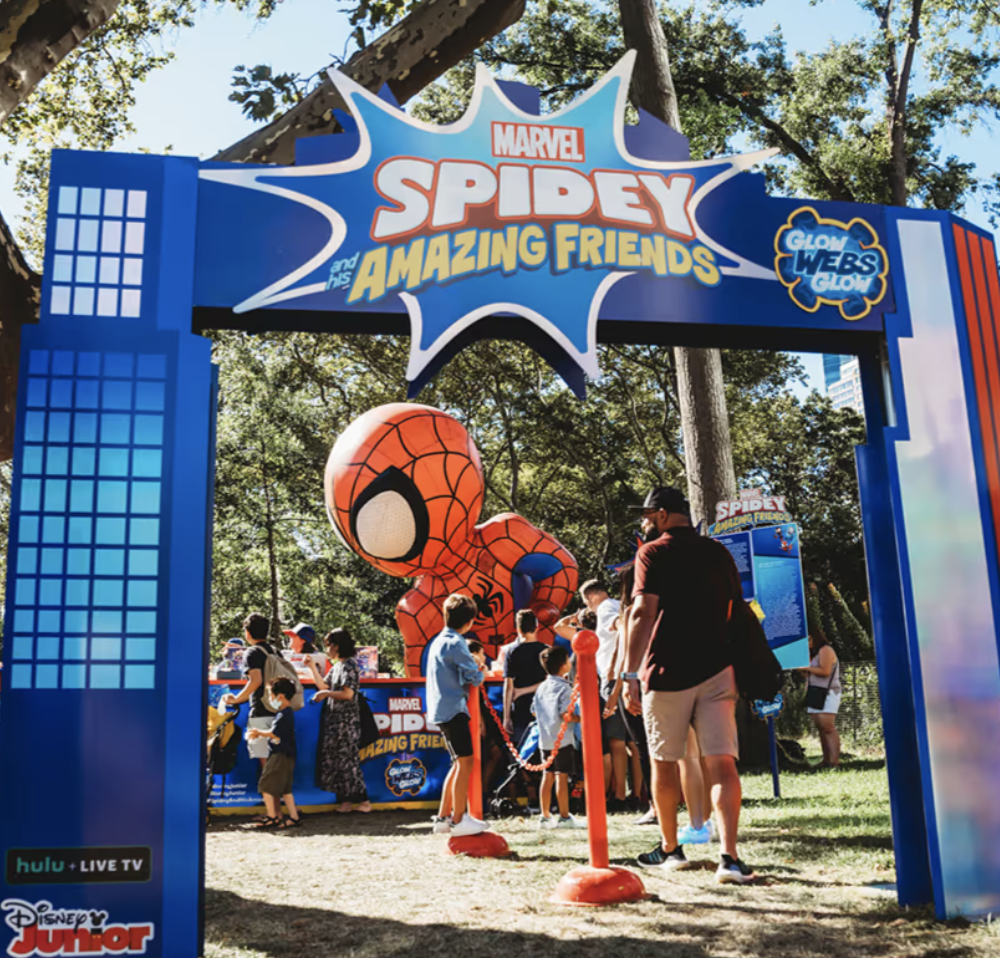Scaling Experiential Campaigns from Single Activations to National Reach
Building a brand activation that works in one market opens the door to bigger opportunities. Replicating that success across multiple cities, audiences, and venues without losing what made it special in the first place requires production systems, logistics networks, and creative frameworks. The brands that scale experiential marketing campaigns successfully understand the difference between copying an event and building a campaign architecture that can adapt while maintaining its core impact.
Create interactive moments that generate natural social posts by focusing on experience-driven brand content that gives people something worth sharing.
Building Repeatable Campaigns
You build one activation that generates incredible results in Detroit, then want to bring that same impact to Chicago and beyond. Scaling happens when you document the production details, audience behaviors, and operational systems that drove those results—not just the impressive creative elements in photos.
Teams dig into their data after every activation. They look at how long people stayed, which interactive elements were most used, and what drove social shares. This data guides expansion decisions—you know which creative components to preserve and which operational processes need adjustment for different markets.
Production and Operations Setup
Scaling experiential marketing campaigns without the infrastructure to handle multiple activations running simultaneously creates chaos. Setting up production systems, logistics networks, and coordination tools before expansion prevents the scramble that happens when managing activations in three different cities at once:
- In-House Fabrication: Building custom components in your facility means controlling quality and timing instead of waiting on vendors who might deliver late or wrong.
- Modular Build Systems: Designing activations with interchangeable pieces allows adjustments for different venue sizes and layouts without starting from scratch every time.
- Operations Coordination Tools: Digital platforms connect teams across different locations so everyone knows what's happening and when things need to ship.
Research your venue space requirements when selecting experiential venues to avoid being stuck with locations that can't accommodate your build specifications.
Milestone Mapping Performance
Attendance counts look impressive, but don't tell the whole story—engagement duration, social sharing rates, and conversion metrics reveal whether people connected with the brand experiences or just walked through. Regular analysis of these metrics shows patterns about audience behavior and creative performance that inform expansion decisions.
Taking Activations to Multiple Cities
Brands build one activation that works great, then want to bring that same experience to other markets. The process involves figuring out what parts of the experience can't change and what needs to bend for different locations:
Managing Operations at Scale
Running three activations at once means coordinating shipping schedules so foam sculptures don't arrive late, making sure teams in different cities can troubleshoot problems on their own, and catching setup issues before they ruin the experience:
- Bulk Purchasing and Coordination: Ordering materials for multiple activations at once reduces costs, but requires precise timing so everything arrives when and where it needs to be.
- Quality Audits and Feedback Systems: Regular check-ins and performance reviews catch problems before they spread to other markets and identify what's working better than expected.
- Training Documentation: Written protocols for setup, breakdown, and troubleshooting so new team members can execute consistently regardless of which market they're working.
Using Data to Improve Performance
Attendance numbers don't explain why people left early or which parts of the activation worked. Teams track how long people stay at each station, what creates bottlenecks, and when engagement drops. During the event, this information lets them move staff around, change digital displays, or open up additional areas when needed. After the activation, they dig into which elements drove the most engagement and what broke down operationally.
Scaling Success Stories
Disney took their Spidey experience from NYC to LA, and Coach built a mobile tour that hit college campuses nationwide. Both campaigns show different approaches to expansion—one through replicating fixed experiences and another through mobile deployment.
Coach Takes Their Brand on the Road
Coach built a mobile tour that hit college campuses across multiple seasons, adapting the same core experience for different schools and timing. The custom vehicle setup let them move quickly between markets while keeping the brand experience consistent. Teams looked at student demographics, campus calendars, and social media data to figure out which schools would generate the best turnout and when to visit. The mobile format meant they could reach way more students than setting up permanent locations, and students posted content that felt natural to their campus environment instead of forced or out of place.

Disney's Spidey HQ Goes Coast-to-Coast
Disney built their Spidey experience in NYC, then brought it to LA with the same impact but adapted for different venues. The team recreated the foam-sculpted headquarters and custom obstacle course while maintaining what made families engage:
- Custom Spidey Headquarters: Foam-sculpted mobile HQ with working cockpit where kids sat in Spidey's chair and explored his gadgets.
- Hero Course: Obstacle course where kids crawled through webs and jumped over villain traps—adapted for both boardwalk and urban plaza locations.
- Interactive Spidey Experience: Holographic meet-and-greet where kids took photos with Spidey and saw Season 2 previews.
- Social Photo Setups: Optical illusion walls where kids appeared to hang upside down or climb buildings for social sharing.
- Giant Spidey Inflatable: Massive inflatable that made the activation visible from distance and created the main photo opportunity for families.

Scaling Experiential Campaigns with Activate
Building one foam-sculpted mobile headquarters is one thing—recreating it in three different cities while keeping kids equally amazed is another. Activate has the fabrication space, logistics coordination, and field teams to take your experiential marketing efforts from one booming market to multiple locations without losing the magic. Fill out our contact form to discuss your expansion plans.
Frequently Asked Questions
What does scaling a campaign mean?
Scaling a campaign means taking one activation that worked and bringing it to other cities while keeping what made people engage. You document which foam sculptures ship well, which setups work in different venues, and how to train new teams to build your obstacle course the same way.
Does scaling improve performance?
Scaling improves performance when you buy materials in bulk, coordinate shipping efficiently, and refine setup processes across multiple locations. More markets mean broader reach and more social media content when each activation maintains the original impact.
How much does it cost to scale experiential campaigns?
Costs per activation become more efficient when you order custom inflatables for multiple cities, coordinate shipping routes, and work with experienced local crews. Budget planning helps track fabrication, venue, and staffing expenses to maximize impact across all markets.
How long does it take to scale an activation to multiple markets?
Timeline depends on build complexity and custom fabrication requirements. Mobile tours with pre-built vehicles deploy quickly between markets, while recreating foam-sculpted headquarters requires coordinating fabrication schedules and local setup teams.
What makes scaling experiential marketing campaigns successful?
Documentation of setup procedures, modular component designs, and flexible creative elements that adapt to different venues while maintaining core impact. Training materials and quality control processes help new teams execute consistently.
How do mobile tours differ from fixed activations for scaling?
Mobile tours use custom vehicles that transport the entire experience between markets, streamlining logistics and setup. Fixed activations allow for larger, more elaborate builds but require venue coordination and shipping management for each location.
How do you measure ROI on scaled experiential campaigns?
Track attendance, social engagement, and lead generation at each location alongside costs for fabrication, logistics, and local teams. Engagement duration reveals how effectively people connected with each activation.
